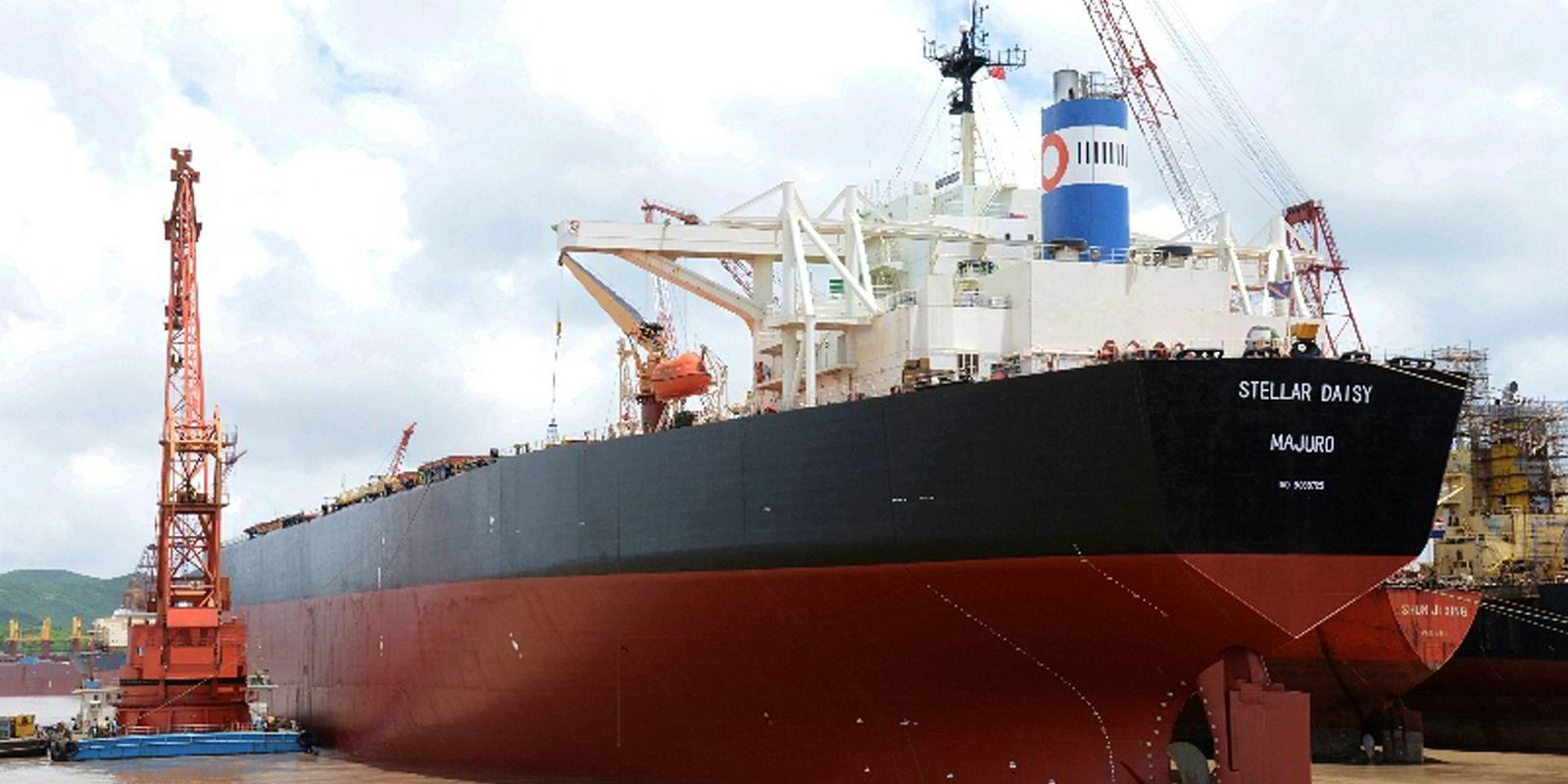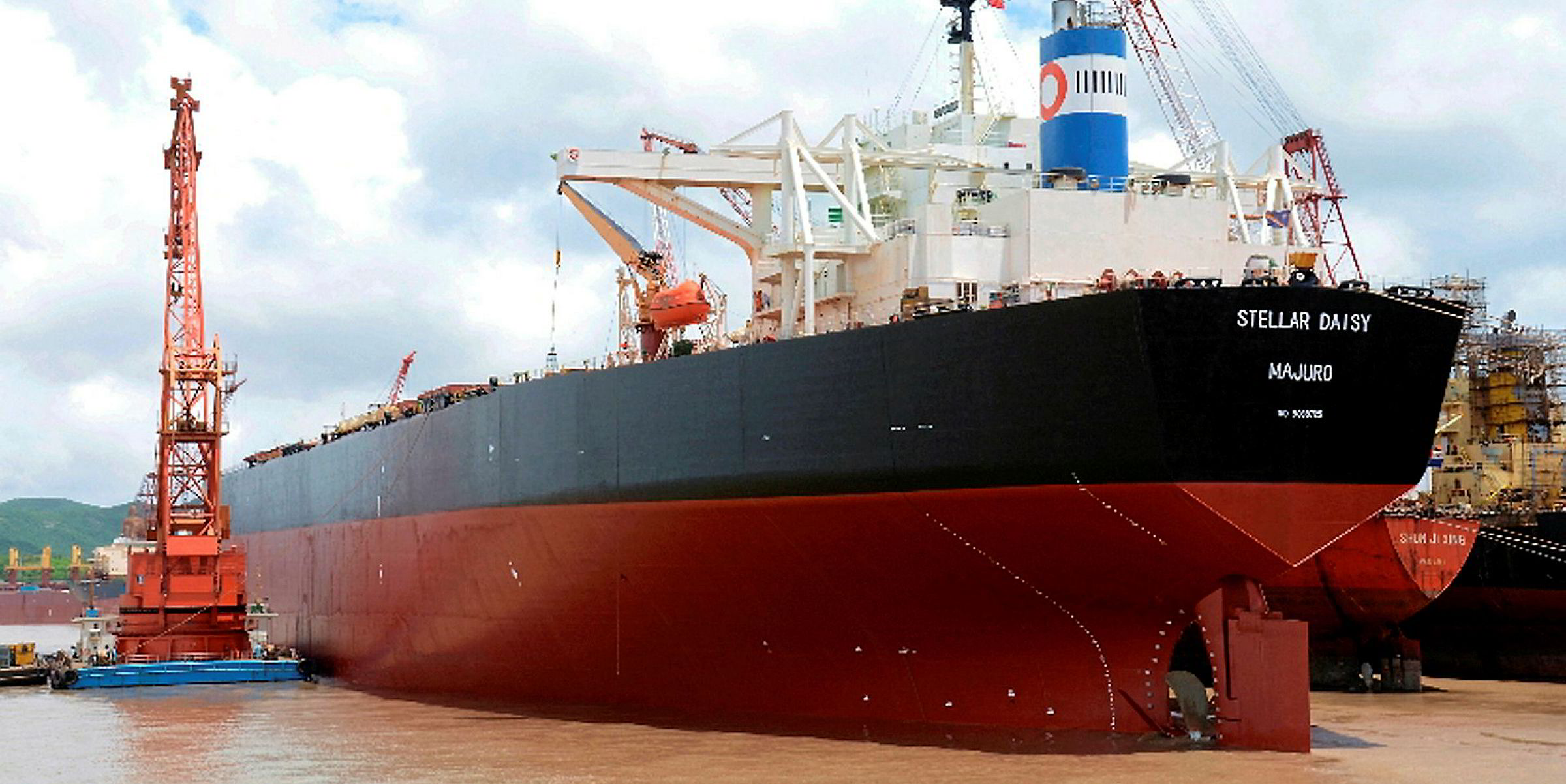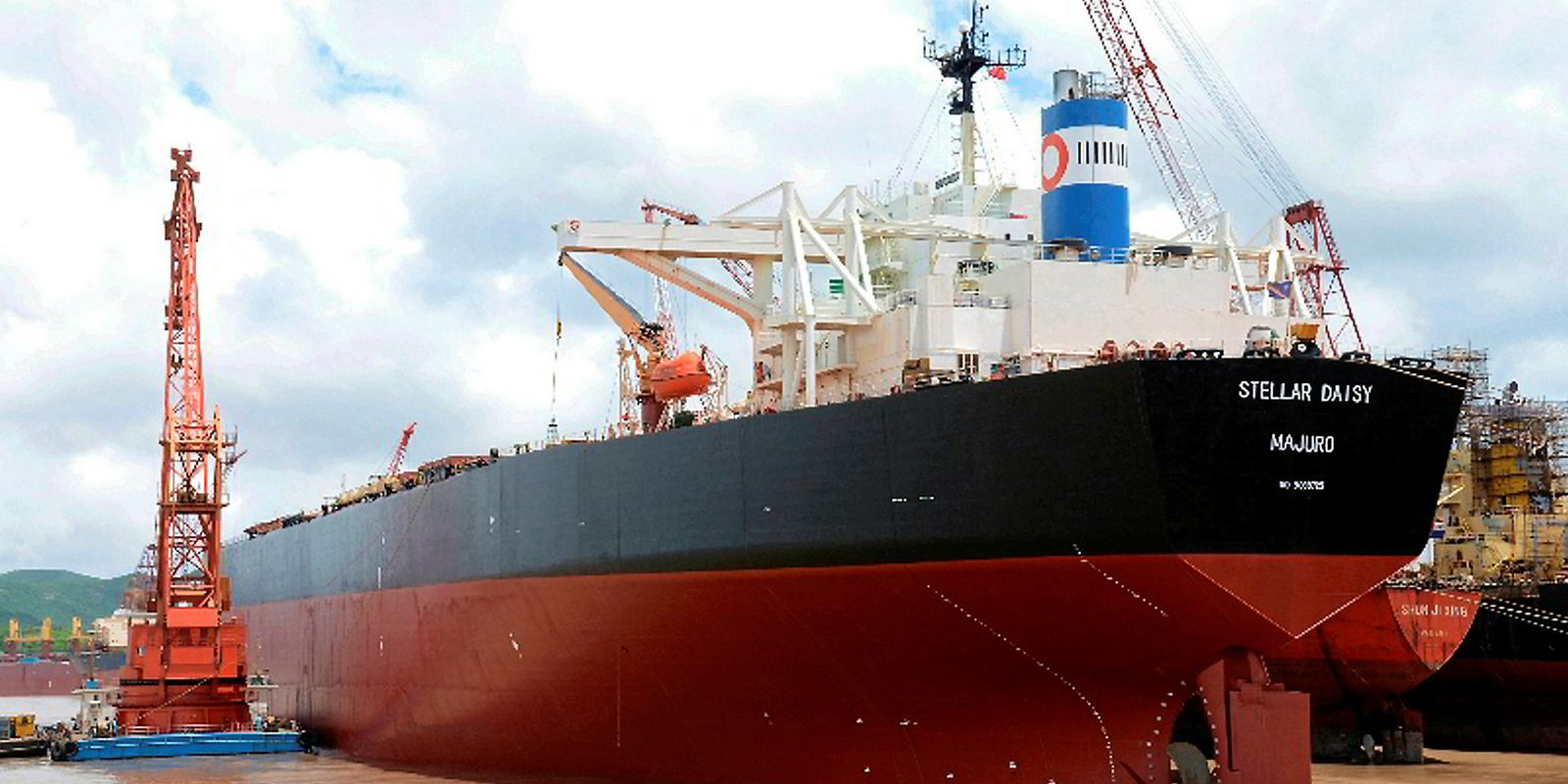The Marshall Islands is set to open up talks at the IMO for a revision of the Safety of Life at Sea (Solas) convention to ensure bulk carrier conversions like the Stellar Daisy are built to a safe standard.
The move comes following recommendations made in its report into the loss of the VLOC Stellar Daisy and 22 seafarers’ lives in March 2017.
The Stellar Daisy’s technical dimensions, with its huge wing ballast tanks it inherited from its former trading life as a VLCC, excluded it from current Solas XII requirements on bulk carrier survivability.
Only its number one cargo tanks were built in accordance with Solas XII bulk carrier requirements.
Solas Chapter XII additional safety requirement for bulker carriers over 150 metres requires they “have sufficient strength to withstand flooding of any space, or spaces, ¬located between adjacent transverse bulkheads”.
New proposals
The Stellar Daisy sank after catastrophic structural failure following progressive flooding that started in the number two and three port wing ballast tanks.
The Marshall Islands Maritime Administrator is preparing a proposal in line with the report’s recommendations to the IMO for consideration at the Maritime Safety Committee (MSC).
The idea is to ensure ore carriers including conversions are built to technical standards that would include them in the Solas XII requirement.
But because of time constraints it will have to wait until MSC meeting 102 which will not convene until 2020.
But ahead of that the Marshall Islands will open a discussion on converted ore carrier safety at the Implementation of IMO Instruments committee in July.
The Stellar Daisy report has also been uploaded to the IMO Global Integrated Shipping Information System (GISIS) is ready for consideration by the IMO’s safety subcommittee.






